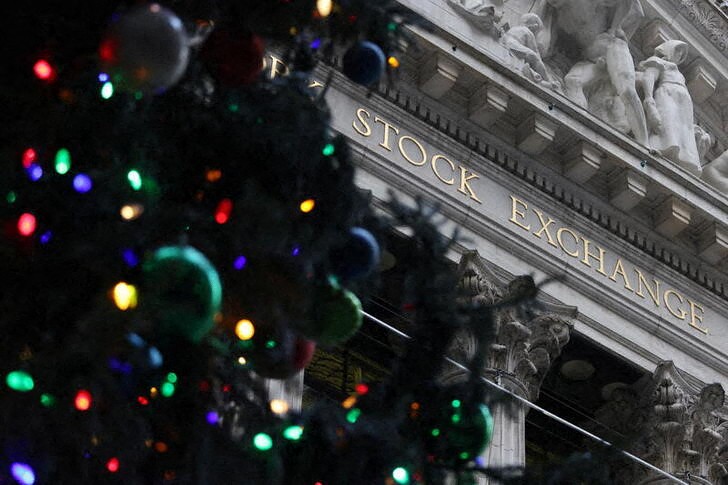By Echo Wang
(Reuters) -The S&P 500 closed slightly lower after hitting a record intraday high on Tuesday, as a four-day rally lost steam in thin trading and investors weighed Omicron-driven travel disruptions and store closures.
The Centers for Disease Control and Prevention (CDC) on Monday shortened the recommended isolation time for Americans with asymptomatic cases of COVID-19 to five days from the previous guidance of 10 days.
The update follows approvals for new pills and more vaccines to fight COVID-19. It helped investors shrug off concerns over thousands of flight cancellations and Apple Inc (NASDAQ:AAPL) shutting its New York stores due to surging cases, and put U.S. stocks on pace for monthly gains.
"This is a holiday-shortened week. So daily movements will likely be exaggerated because of a low relative volume," said Sam Stovall, chief investment strategist at CFRA Research in New York.
Seven of the 11 major S&P 500 sector indexes rose on Tuesday. Technology and Communications Services led declines.
The Dow Jones Industrial Average rose 95.83 points, or 0.26%, to 36,398.21; the S&P 500 lost 4.84 points, or 0.10%, to 4,786.35 and the Nasdaq Composite dropped 89.54 points, or 0.56%, to 15,781.72.
In company news, Boeing (NYSE:BA) Co rose 1.46% as Indonesia lifted a ban on its 737 MAX, three years after the crash of one of the aircraft and loss of all 189 people on board.
Markets are in the seasonal Santa Claus rally, with CFRA Research data showing the S&P 500 has on average risen 1.3% in the last five trading days of the year, and first two days of the new year since 1969.
"Investors are digesting the gains from the last three days, ... but there are concerns such as how will the Omicron variant affect the market? Would that end up undoing the Santa Claus rally? What about the Fed raising interest rates, could that cause challenges for the year ahead?" Stovall said.
The Federal Reserve signaled earlier this month three quarter-percentage-point interest rate hikes by the end of 2022 as the economy nears full employment and the U.S. central bank copes with an inflation surge. [L1N2SZ1G5]
Volume on U.S. exchanges was 7.55 billion shares, compared with the 11.56 billion average for the full session over the last 20 trading days.
Declining issues outnumbered advancing ones on the NYSE by a 1.04-to-1 ratio; on Nasdaq, a 1.88-to-1 ratio favored decliners.
The S&P 500 posted 81 new 52-week highs and no new lows; the Nasdaq Composite recorded 105 new highs and 264 new lows.
